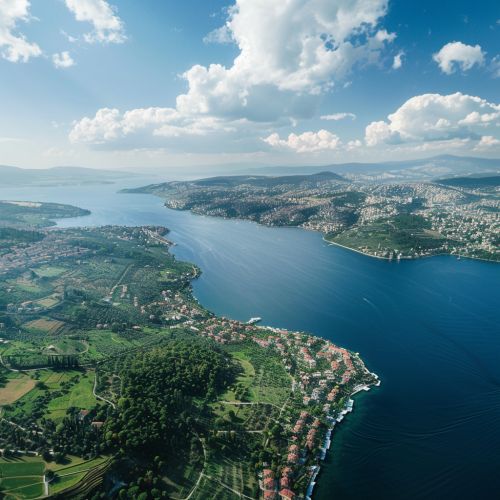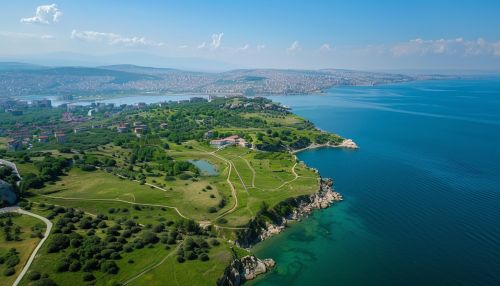Marmara Sea
Geography
The Marmara Sea is an inland sea located entirely within the borders of Turkey. It connects the Black Sea to the Aegean Sea, thus serving as a bridge between the Mediterranean Sea and the Black Sea. The sea is named after the Marmara Island, which is rich in sources of marble, from the Greek word marmaros, meaning marble in English. The sea covers an area of approximately 11,350 square kilometers with a maximum depth of about 1,370 meters.


Hydrology
The Marmara Sea has a unique hydrological structure due to its position between two different bodies of water. The upper layer of the sea water is brackish and flows from the Black Sea to the Aegean Sea, while the lower layer is saline and flows in the opposite direction. This two-way flow system, known as a stratified flow, results in a significant difference in salinity and density between the two layers.
Climate
The climate of the Marmara Sea region is a transitional type between the oceanic climate of the Black Sea and the Mediterranean climate of the Aegean Sea. The region experiences hot, dry summers and mild, wet winters. The sea itself has a moderating effect on the climate, making the coastal areas more temperate than the inland regions.
Flora and Fauna
The Marmara Sea is home to a diverse range of marine life. It serves as a migration path for many species of fish, including the anchovy, bluefish, and horse mackerel, which move between the Black Sea and the Aegean Sea according to the seasons. The sea is also home to various species of dolphins and seals. The coastal areas around the sea are rich in birdlife, with many migratory birds passing through the region.
Economy
The Marmara Sea plays a significant role in the Turkish economy. The sea is a major route for maritime trade, with numerous ports along its coast, including the port of Istanbul, one of the busiest in the world. The sea is also a rich source of fish, contributing to the local fishing industry. In addition, the Marmara region is a popular tourist destination, with its beautiful coastlines, historic cities, and unique culture.
Environmental Issues
The Marmara Sea faces several environmental challenges. Overfishing has led to a decline in fish stocks, while pollution from industrial and domestic waste is a major concern. The sea is also at risk from invasive species, which can disrupt the local ecosystem. Efforts are being made to address these issues and preserve the unique environment of the Marmara Sea.
